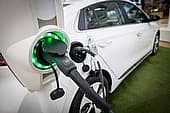Home > Money > News > FCA request information from banks on overdraft hikes
FCA request information from banks on overdraft hikes
Financial Conduct Authority (FCA) write to banks asking them to justify their decision to hike overdraft rates ahead of April deadline for reform.
The FCA has asked which factors banks considered when setting their new rates and which executives were part of the discussions.
Their letter also includes a request to detail their approach towards customers who will be adversely affected by the changes.
However, the FCA aren't compelling banks to supply this information, with the letter stating that it's voluntary for banks to respond to the request.

FCA concerns
The FCA's letter comes ahead of the reforms to overdraft rates due to come into force in April and follows the announcement of the rates set by each overdraft provider.
While they reiterate the reforms will make overdraft pricing simpler and fairer, they wish to know how banks arrived at their new rates.
This includes asking for a timeline of key decisions, particularly any moments where large revisions to rates were proposed. They have also requested meeting minutes where available and attendance lists for those meetings.
Along with this, they have asked for details of how many of their customers banks believe will be worse off due to the changes and how those customers will be supported.
The FCA make clear that responding to the letter is voluntary, although they ask for responses to be sent by 10 February to help them compile information.
Overdraft reforms
The reforms coming into force in April were designed to improve the fairness of the overdraft market by, among other things, ensuring arranged and unarranged overdraft charges are treated the same and that a simple annual rate is used to advertise overdrafts.
Banks have been setting their rates over recent months, with Lloyds Banking Group setting their standard rate at 39.9% last week and their rate for customers with poorer credit histories set at 49.9%.
They joined others including Nationwide, Santander and HSBC at the 39.9% price point while RBS and NatWest set their rate at 39.49%. Monzo and Starling set several rates depending on a customer's credit history.
Just last week, the FCA published research showing that seven out of ten overdraft customers would see no increase in their costs or would be better off as a result of the reforms.
However, while most customers will see no change, it seems the FCA is concerned about those who will be adversely impacted and have asked banks for reassurances about what support those customers will receive.
Unintended consequences
It was inevitable banks would increase their overdraft rates for all customers when they were forced by these reforms to remove higher penalties for unarranged overdrafts.
What's concerned campaigners, however, is the uniform way banks have raised their overdraft rates, with many opting to set them around the 39% mark.
So, while one of the stated intentions of the reforms was to aid comparison of different rates to allow customers to make informed choices, this doesn't appear to be the case now most providers have set their rates at similar levels.
Debt charity StepChange has welcomed the FCA's letter to banks, warning they must be watchful to ensure banks do not perpetuate unfairness or harm by charging significantly higher costs than previously to some overdraft customers.
By the time the new overdraft rates come into force in April, it's hoped that most customers will be aware of the changes and the intention is for customers to seek out cheaper ways of borrowing rather than simply pay higher costs.
Whether customers are able to make those decisions and switch to cheaper forms of borrowing in time remains to be seen.
Compare bank accounts using our free comparison search tool.
Get insider tips and the latest offers in our newsletter

We are independent of all of the products and services we compare.

We order our comparison tables by price or feature and never by referral revenue.

We donate at least 5% of our profits to charity, and we have a climate positive workforce.
Latest Guides

Insurance
Is pet insurance is a good idea?
Insurance
Do electric cars cost more to insure?



Comments